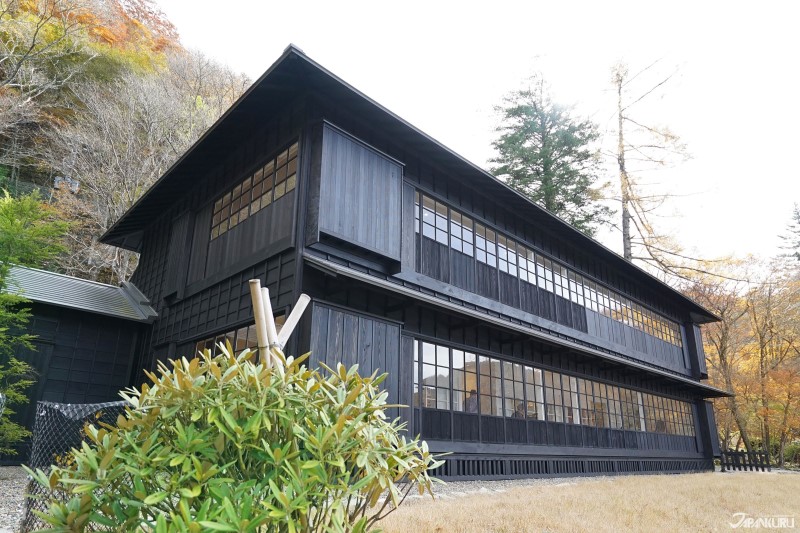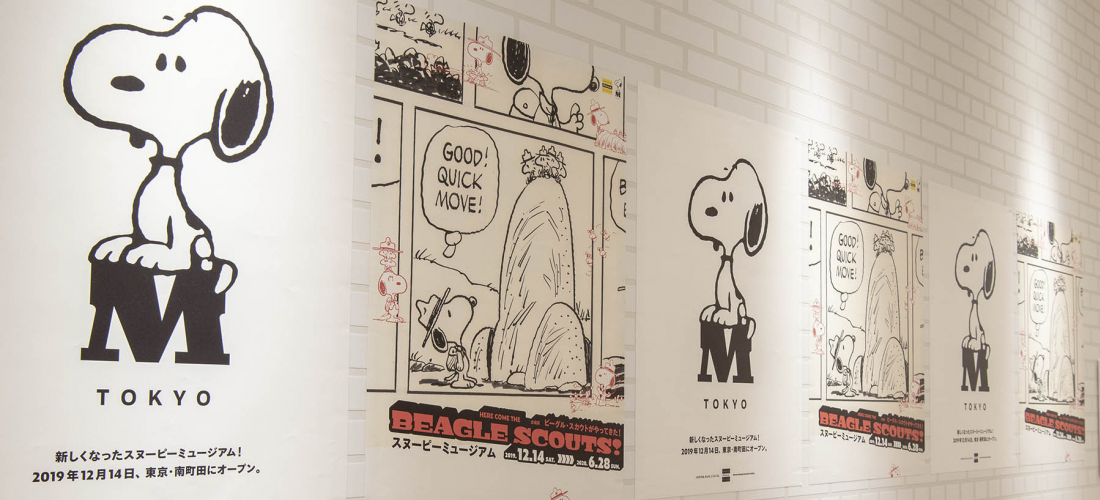CONTENTS
Plongez dans l’Automne Japonais à Nikkō
De nombreuses personnes se rendent à Nikkō pour deux raisons : visiter les sites inscrits au Patrimoine Mondial de l’UNESCO ou encore explorer la Nature luxuriante qu’offre la Préfecture de Tochigi. Pourquoi choisir quand on peut faire les deux? Lors de la deuxième partie de notre voyage nous avons profité du temps qu’il nous restait pour visiter les environs de Nikkō en période automnale!
En route pour le Plateau d’Akechidaira nous avons emprunté les routes d’Irohazaka. Il s’agit d’une route de montagne reliant la ville de Nikkō aux montagnes alentours. Petite anecdote assez sympathique les trois premières syllabes de l’ancien alphabet japonais était justement ‘i’ ‘ro’ ‘ha’ (い・ろ・は) mais ce n’est plus le cas aujourd’hui. L’origine du nom viendrait du fait que tout comme les 48 sonorités de l’alphabet japonais, cette route de montagne possèderait 48 virages!
② Plateau Akechidaira (明智平)
Près du sommet de la montagne se trouve cette beauté naturelle, le Plateau d'Akechidaira! Il est particulièrement apprécié des touristes qui y viennent en nombre pour admirer les couleurs d'Automne.
Le meilleur moyen de profiter du panorama est d’emprunter le téléphérique Akechidaira.
D’ici vous aurez une magnifique vue des paysages de la région : Lac Chūzenji, Chutes de Kegon et Mont Nantai.
Kegon est une impressionnante cascade du haut de ses 97 mètres. Elle fait partie des trois plus hautes chutes d’eau du Japon. Les deux autres sont :
・Chutes de Nachi (那智大滝) dans la préfecture de Wakayama, avec ses 133 mètres de haut.
・Chutes de Fukuroda (袋田の滝) dans la préfecture d’Ibaraki, avec ses 120 mètres de haut.
L’eau de cette cascade est issue du Lac Chūzenji et vous pouvez même apprécier la vue sur ses deux lieux depuis deux ponts d’observation, l’un gratuit, l’autre payant (celui-ci se trouve aux pieds de la cascade et vous pouvez le rejoindre en empruntant un ascenseur). Vous pouvez également décider de grimper jusqu’au plateau Akechidaira pour avoir une vue imprenable sur les alentours.
④ Parc Commémoratif de la Villa de l’Ambassade Britannique (英国大使館別荘記念公演)
Ouvert au public en 2014, la Villa de l’Ambassade Britannique à Nikkō a été construite durant l’Epoque Meiji par un diplomate britannique.
Villa dans un style épurée entourée par les feuilles d’automne
Vous y retrouverez des salles d’exposition mais ce qui fait le fort de ce lieu est la magnifique vue qu’il offre sur le Lac Chūzenji.
Vue sur le Lac Chūzenji
Vous pourrez y prendre un tas de jolies photos pour montrer à vos proches la beauté de la Nature japonaise.
Regardez cette vue!
Ce n’était pas quelque chose de rare pour une Ambassade de s’offrir une villa au bord du lac et nous ne pouvons que comprendre pourquoi!
⑤ Parc Commémoratif de la Villa de l’Ambassade Italienne (イタリア大使館別荘記念公演)
Le concepteur de cette villa, Antonin Raymon est également celui qui a réalisé le design de l’Hôtel Impérial de Tokyo.
Dans le cas de la villa de l’Ambassade Britannique le concepteur était d’origine tchèque.
Jetez un oeil à l’intérieur!
L’intérieur a été finalisé en 1928 et fut utilisé successivement par les différents ambassadeurs jusqu’en 1977.
300 yens pour les deux visites.
Un ticket vous permet de découvrir les deux villas. Attendez-vous à voir de somptueux paysages.
⑥ Senjōgahara (戦場ヶ原)
Cette plaine de 400 hectares est un spot apprécié des randonneurs notamment car elle est reconnue comme le plus bel endroit pour apprécier le changement de couleur des feuilles durant l’automne.
Elle fait partie du Parc Naturel de Nikkō donc vous risquez de croiser une flore et une faune sauvage! Vous y trouverez de nombreux sentiers de randonnée pour en profiter.
⑦ Ville thermale Oku-Nikkō Yumoto
Oku-Nikkō est une petite zone proposant 15 spas différents (hôtels, auberges, etc.) se trouvant sur les berges du Lac Yuno (湯ノ湖). Il ne vous faudra pas longtemps pour sentir l’odeur du souffre s’échappant des eaux thermales.
Avec le temps de nombreuses sources se sont taries. C’est pour cette raison que des huttes ont été installées pour protéger les dernières sources du lieu.
Bien que l’odeur pourrait en rebuté certains, l’eau presque laiteuse a des bienfaits pour la peau. Vous ressortirez de votre onsen avec une peau de bébé!
Nous vous parlions déjà du ‘Shinkyō’ (神橋, pont sacré) faisant partie du Sanctuaire Futarasan lors de notre précédent article. C’est un lieu à ne pas manquer et l’un des plus beaux spots du Japon!
Spécialités de la région
Le ’Sanzaru-zaki’ (三猿焼き) représentant les trois singes sages de Nikkō
Le ‘Yuba’ (湯葉), il s’agit en fait d’une fine couche de Tofu
Si vous avez raté notre premier article vous pouvez toujours revenir dessus ICI!
Nous vous invitons à partager vos petites anecdotes avec nous 🎶Share your stories with us🎶
Restez connectés pour de nouveaux articles originaux tous les jours sur JAPANKURU🐶.
N'hésitez pas à nous suivre également sur nos réseaux Facebook et Instagram pour plus d'histoires japonaises!
Details
MAP
Hosoomachi, Nikko, Tochigi
Chugushi, Nikko, Tochigi
2559 Yumoto, Nikko, Tochigi
COMMENT
FEATURED MEDIA
VIEW MORE 
A New Tokyo Animal Destination: Relax & Learn About the World’s Animals in Japan
#pr #japankuru #anitouch #anitouchtokyodome #capybara #capybaracafe #animalcafe #tokyotrip #japantrip #카피바라 #애니터치 #아이와가볼만한곳 #도쿄여행 #가족여행 #東京旅遊 #東京親子景點 #日本動物互動體驗 #水豚泡澡 #東京巨蛋城 #เที่ยวญี่ปุ่น2025 #ที่เที่ยวครอบครัว #สวนสัตว์ในร่ม #TokyoDomeCity #anitouchtokyodome

Shohei Ohtani Collab Developed Products & Other Japanese Drugstore Recommendations From Kowa
#pr #japankuru
#kowa #syncronkowa #japanshopping #preworkout #postworkout #tokyoshopping #japantrip #일본쇼핑 #일본이온음료 #오타니 #오타니쇼헤이 #코와 #興和 #日本必買 #日本旅遊 #運動補充能量 #運動飲品 #ช้อปปิ้งญี่ปุ่น #เครื่องดื่มออกกำลังกาย #นักกีฬา #ผลิตภัณฑ์ญี่ปุ่น #อาหารเสริมญี่ปุ่น

도쿄 근교 당일치기 여행 추천! 작은 에도라 불리는 ‘가와고에’
세이부 ‘가와고에 패스(디지털)’ 하나면 편리하게 이동 + 가성비까지 완벽하게! 필름카메라 감성 가득한 레트로 거리 길거리 먹방부터 귀여움 끝판왕 핫플&포토 스폿까지 총집합!
Looking for day trips from Tokyo? Try Kawagoe, AKA Little Edo!
Use the SEIBU KAWAGOE PASS (Digital) for easy, affordable transportation!
Check out the historic streets of Kawagoe for some great street food and plenty of picturesque retro photo ops.
#pr #japankuru #도쿄근교여행 #가와고에 #가와고에패스 #세이부패스 #기모노체험 #가와고에여행 #도쿄여행코스 #도쿄근교당일치기 #세이부가와고에패스
#tokyotrip #kawagoe #tokyodaytrip #seibukawagoepass #kimono #japantrip

Hirakata Park, Osaka: Enjoy the Classic Japanese Theme Park Experience!
#pr #japankuru #hirakatapark #amusementpark #japantrip #osakatrip #familytrip #rollercoaster #retrôvibes #枚方公園 #大阪旅遊 #關西私房景點 #日本親子旅行 #日本遊樂園 #木造雲霄飛車 #히라카타파크 #สวนสนุกฮิราคาตะพาร์ค

🍵Love Matcha? Upgrade Your Matcha Experience With Tsujiri!
・160년 전통 일본 말차 브랜드 츠지리에서 말차 덕후들이 픽한 인기템만 골라봤어요
・抹茶控的天堂!甜點、餅乾、飲品一次滿足,連伴手禮都幫你列好清單了
・ส่องมัทฉะสุดฮิต พร้อมพาเที่ยวร้านดังในอุจิ เกียวโต
#pr #japankuru #matcha #matchalover #uji #kyoto #japantrip #ujimatcha #matchalatte #matchasweets #tsujiri #말차 #말차덕후 #츠지리 #교토여행 #말차라떼 #辻利抹茶 #抹茶控 #日本抹茶 #宇治 #宇治抹茶 #日本伴手禮 #抹茶拿鐵 #抹茶甜點 #มัทฉะ #ของฝากญี่ปุ่น #ชาเขียวญี่ปุ่น #ซึจิริ #เกียวโต

・What Is Nenaito? And How Does This Sleep Care Supplement Work?
・你的睡眠保健品——認識「睡眠茶氨酸錠」
・수면 케어 서플리먼트 ‘네나이토’란?
・ผลิตภัณฑ์เสริมอาหารดูแลการนอน “Nenaito(ネナイト)” คืออะไร?
#pr #japankuru #sleepcare #japanshopping #nenaito #sleepsupplement #asahi #睡眠茶氨酸錠 #睡眠保健 #朝日 #l茶胺酸 #日本藥妝 #日本必買 #일본쇼핑 #수면 #건강하자 #네나이토 #일본영양제 #อาหารเสริมญี่ปุ่น #ช้อปปิ้งญี่ปุ่น #ร้านขายยาญี่ปุ่น #ดูแลตัวเองก่อนนอน #อาซาฮิ

Japanese Drugstore Must-Buys! Essential Items from Hisamitsu® Pharmaceutical
#PR #japankuru #hisamitsu #salonpas #feitas #hisamitsupharmaceutical #japanshopping #tokyoshopping #traveltips #japanhaul #japantrip #japantravel

Whether you grew up with Dragon Ball or you just fell in love with Dragon Ball DAIMA, you'll like the newest JINS collab. Shop this limited-edition Dragon Ball accessory collection to find some of the best Dragon Ball merchandise in Japan!
>> Find out more at Japankuru.com! (link in bio)
#japankuru #dragonball #dragonballdaima #animecollab #japanshopping #jins #japaneseglasses #japantravel #animemerch #pr

This month, Japankuru teamed up with @official_korekoko to invite three influencers (originally from Thailand, China, and Taiwan) on a trip to Yokohama. Check out the article (in Chinese) on Japankuru.com for all of their travel tips and photography hints - and look forward to more cool collaborations coming soon!
【橫濱夜散策 x 教你怎麼拍出網美照 📸✨】
每次來日本玩,是不是都會先找旅日網紅的推薦清單?
這次,我們邀請擁有日本豐富旅遊經驗的🇹🇭泰國、🇨🇳中國、🇹🇼台灣網紅,帶你走進夜晚的橫濱!從玩樂路線到拍照技巧,教你怎麼拍出最美的夜景照。那些熟悉的景點,換個視角說不定會有新發現~快跟他們一起出發吧!
#japankuru #橫濱紅磚倉庫 #汽車道 #中華街 #yokohama #japankuru #橫濱紅磚倉庫 #汽車道 #中華街 #yokohama #yokohamaredbrickwarehouse #yokohamachinatown

If you’re a fan of Vivienne Westwood's Japanese designs, and you’re looking forward to shopping in Harajuku this summer, we’ve got important news for you. Vivienne Westwood RED LABEL Laforet Harajuku is now closed for renovations - but the grand reopening is scheduled for July!
>> Find out more at Japankuru.com! (link in bio)
#japankuru #viviennewestwood #harajuku #omotesando #viviennewestwoodredlabel #viviennewestwoodjapan #비비안웨스트우드 #오모테산도 #하라주쿠 #日本購物 #薇薇安魏斯伍德 #日本時尚 #原宿 #表參道 #japantrip #japanshopping #pr

Ready to see TeamLab in Kyoto!? At TeamLab Biovortex Kyoto, the collective is taking their acclaimed immersive art and bringing it to Japan's ancient capital. We can't wait to see it for ourselves this autumn!
>> Find out more at Japankuru.com! (link in bio)
#japankuru #teamlab #teamlabbiovortex #kyoto #kyototrip #japantravel #artnews
Photos courtesy of teamLab, Exhibition view of teamLab Biovortex Kyoto, 2025, Kyoto ® teamLab, courtesy Pace Gallery

Japanese Makeup Shopping • A Trip to Kamakura & Enoshima With Canmake’s Cool-Toned Summer Makeup
#pr #canmake #enoshima #enoden #에노시마 #캔메이크 #japanesemakeup #japanesecosmetics

⚔️The Robot Restaurant is gone, but the Samurai Restaurant is here to take its place. Check it out, and don't forget your coupon!
🍣신주쿠의 명소 로봇 레스토랑이 사무라이 레스토랑으로 부활! 절찬 쿠폰 발급중
💃18歲以上才能入場的歌舞秀,和你想的不一樣!拿好優惠券去看看~
#tokyo #shinjuku #samurairestaurant #robotrestaurant #tokyotrip #도쿄여행 #신주쿠 #사무라이레스토랑 #이색체험 #할인이벤트 #歌舞伎町 #東京景點 #武士餐廳 #日本表演 #日本文化體驗 #japankuru #japantrip #japantravel #japanlovers #japan_of_insta

Japanese appliance & electronics shopping with our KOJIMA x BicCamera coupon!
用JAPANKURU的KOJIMA x BicCamera優惠券買這些正好❤️
코지마 x 빅 카메라 쿠폰으로 일본 가전 제품 쇼핑하기
#pr #japankuru #japanshopping #kojima #biccamera #japaneseskincare #yaman #dji #osmopocket3 #skincaredevice #日本購物 #美容儀 #相機 #雅萌 #日本家電 #일본여행 #면세 #여행꿀팁 #일본쇼핑리스트 #쿠폰 #일본쇼핑 #일본브랜드 #할인 #코지마 #빅카메라 #japankurucoupon























































